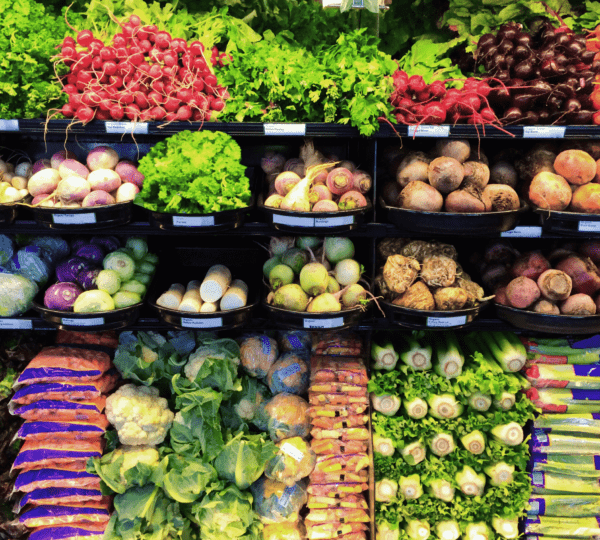
What to Look for When Shopping for Organic Produce: A Guide
One summer afternoon, while driving through a small town, I spotted a group of kids selling lemonade at a roadside stand. They waved excitedly, so I pulled over to support their little business. As I sipped the lemonade, one of the kids proudly said, “It’s made with real lemons, not the powder!” That got me thinking: what made these lemons better? Were they organic? Pesticide-free? Locally sourced?
We often hear about organic produce, but do we really understand what makes it better? If a child’s lemonade stand can raise these questions, imagine the importance of knowing what to look for when shopping for organic fruits and vegetables. Let’s break it down so you can make informed choices the next time you’re in the produce aisle.
What Does “Organic” Actually Mean?
The term “organic” isn’t just a marketing buzzword—it has a strict set of guidelines behind it. According to the United States Department of Agriculture (USDA), organic produce must be grown without synthetic pesticides, artificial fertilizers, genetically modified organisms (GMOs), or irradiation. Instead, organic farmers rely on natural compost, crop rotation, and biological pest control methods to maintain soil health and reduce environmental impact.
How to Identify Organic Produce
Not all fruits and vegetables labeled as “organic” are truly organic. Here’s what you need to look for:
- USDA Organic Seal – In the U.S., only products that meet USDA’s organic standards can display this label.
- PLU Codes – Organic produce has a five-digit code starting with “9.” For example, an organic banana may be labeled “94011.”
- Certified Organic Logos – Different countries have their own certification labels, such as the Canada Organic Regime (COR) or the EU Organic Logo in Europe.
Decoding Organic Labels
- 100% Organic: This label signifies that all ingredients in the product are certified organic.
- Organic: This label indicates that at least 95% of the ingredients are certified organic.
- Made with Organic Ingredients: This label means that at least 70% of the ingredients are certified organic.
The Benefits of Choosing Organic Produce
-
Fewer Pesticides, Fewer Worries
A study by the Environmental Working Group (EWG) found that conventionally grown strawberries, spinach, and kale contain the highest levels of pesticide residues. Opting for organic reduces your exposure to these chemicals, which have been linked to health issues like hormone disruption, neurological disorders, and even certain cancers. Children and pregnant women are particularly vulnerable to pesticide exposure, making organic choices especially important for families.
-
Higher Nutritional Value? The Debate Continues
Some studies suggest that organic fruits and vegetables contain higher levels of antioxidants and essential nutrients. Research published in the British Journal of Nutrition found that organic crops have 20-40% more antioxidants than conventional ones. Additionally, organic dairy and meat products often contain higher levels of omega-3 fatty acids, which support heart and brain health. However, experts from Harvard Health point out that while the difference exists, it may not be significant enough to impact overall health dramatically. Nonetheless, if you want to maximize your intake of essential nutrients, organic may be the better option.
-
Better for the Environment
Organic farming promotes biodiversity, improves soil health, and reduces pollution. It uses less energy and produces fewer greenhouse gases than conventional farming, making it a more sustainable choice. Organic farms also avoid synthetic fertilizers and pesticides that can contaminate water sources and harm wildlife. Additionally, regenerative organic farming techniques help sequester carbon in the soil, playing a role in combating climate change.
-
Fewer Additives and GMOs
Organic certification prohibits the use of artificial preservatives, synthetic additives, and genetically modified organisms (GMOs). This means that when you choose organic, you’re consuming food that is free from controversial additives like artificial colors, preservatives, and flavor enhancers. While research on the long-term effects of GMOs is ongoing, many people prefer to avoid them as a precautionary measure.
-
Better Taste? Many Say Yes!
Organic produce is often grown in smaller batches and picked at peak ripeness, leading to better flavor. Many people report that organic fruits and vegetables taste fresher and more vibrant than their conventional counterparts. This is because organic farming focuses on soil health, which directly impacts the taste and quality of the produce. If you’ve ever had a juicy organic tomato or a crisp, flavorful organic apple, you might agree that the taste is noticeably superior.
-
Supports Local Farmers and Small Businesses
Many organic farms are small, family-owned operations rather than large industrial farms. By choosing organic, especially from local farmers’ markets or community-supported agriculture (CSA) programs, you’re helping to support local businesses, promote fair labor practices, and keep your food dollars within your community.
How to Shop for Organic Produce Smartly
- Prioritize the Dirty Dozen
If you’re on a budget but still want to reduce pesticide exposure, focus on buying organic versions of the “Dirty Dozen,” a list published by the EWG that includes produce with the highest pesticide levels, such as strawberries, apples, and tomatoes. - Save on the Clean Fifteen
Conversely, the “Clean Fifteen” list includes produce with the least pesticide residues, like avocados, onions, and pineapples. If you’re looking to save, these items can be bought conventionally without much concern. - Buy Seasonal and Local
Organic doesn’t always mean fresh. Produce that’s in season and locally grown is often fresher, more nutritious, and more affordable. Visit farmers’ markets or join a Community Supported Agriculture (CSA) program to get organic produce directly from local farms. - Examine Appearance and Smell
Organic produce may not always look “perfect” due to the lack of artificial growth enhancers. However, they often have a richer taste and aroma. Avoid produce that’s overly bruised or moldy. - Wash Even Organic Produce
Organic doesn’t mean completely pesticide-free. Organic farms can still use certain natural pesticides, so it’s a good habit to wash all produce thoroughly. - Compare Prices and Shop Smart
Prices for organic produce vary by store. Check local farmers’ markets, online retailers, and membership-based grocery stores for the best deals. Many supermarkets offer discounts on organic produce nearing its expiration date.
The Cost Factor: Is Organic Worth the Price?
Organic produce often costs more due to labor-intensive farming practices. However, there are ways to cut costs:
- Buy in bulk when possible.
- Opt for store-brand organic products.
- Shop at discount grocery chains that carry organic options.
- Consider frozen organic produce, which is often cheaper than fresh.
Dr. Andrew Weil, a well-known integrative medicine specialist, suggests that while organic is preferable, eating a variety of fruits and vegetables—organic or not—is what truly matters. Similarly, nutritionist Marion Nestle emphasizes that “organic food is about agricultural practices rather than nutritional superiority.”
Fun Facts About Organic Produce
- Organic apples may take longer to ripen than conventional ones, but they often have a more intense flavor.
- Some organic farms use ducks instead of pesticides to control pests in rice fields.
- Organic bananas tend to have a thicker peel, making them more resistant to pests naturally.
- In blind taste tests, many people prefer the taste of organic strawberries over conventional ones due to their higher sugar content.
- Organic farmers use composted manure and natural fertilizers to enrich the soil, making their crops healthier over time.
Conclusion
Shopping for organic produce is about making informed choices, not just following trends. Whether you prioritize health, environmental impact, or taste, understanding what to look for ensures you get the best value for your money. So next time you’re at the grocery store, remember: the quality of your food starts with how it’s grown. Just like that roadside lemonade stand, the best ingredients always make the best final product.
References
- Environmental Working Group (EWG) – “Dirty Dozen & Clean Fifteen” Reports
- USDA Organic Certification Standards
- British Journal of Nutrition – “Nutritional Differences in Organic vs. Conventional Produce”
- Harvard Health Publishing – “Is Organic Food Really Better?”
- Dr. Andrew Weil’s Official Website on Organic Produce
- Marion Nestle, “What to Eat” – Book on Food Choices











